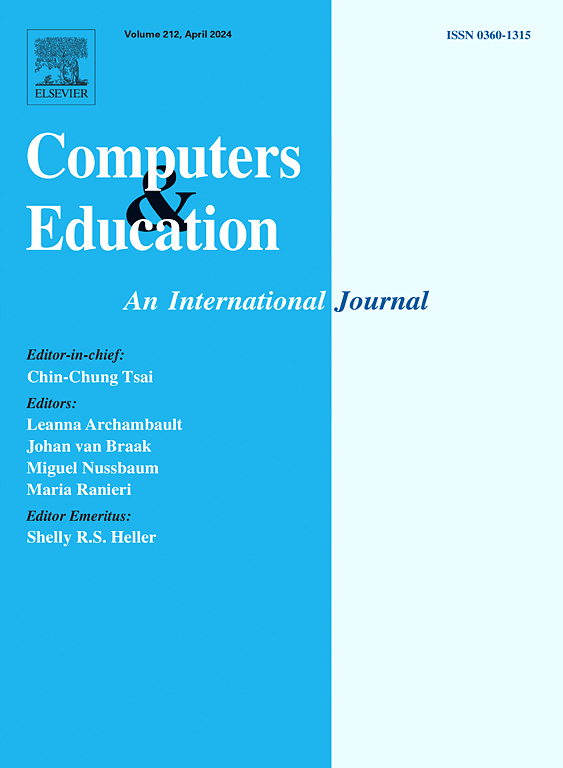An exploratory process mining on students’ complex problem-solving behavior: The distinct patterns and related factors
IF 10.5
1区 教育学
Q1 COMPUTER SCIENCE, INTERDISCIPLINARY APPLICATIONS
引用次数: 0
Abstract
This study showcases how process mining techniques can be used to uncover students' problem-solving processes. The data comprised event logs recoding the execution sequences of 2066 students who engaged in an example “Climate Control” task from PISA 2012. By analyzing students’ trace variants, eight distinct problem-solving patterns were identified, reflecting their varied approaches to key issues of problem exploration and representation. Then, the First-Order Markov Model and analysis of variance were used to highlight similarities and differences among these eight patterns. A multinomial regression analysis further examined their crucial predictors. The results revealed notable differences in the frequency of strategies employed, transitions between strategies, and the timing of representations across eight patterns. While some patterns achieved success by systematical or mixed use of the varying-one-thing-at-a-time strategy, others relied on guessing. Unsuccessful problem solvers might struggle due to an inability to control variables, flawed reasoning from trials with alternative strategies, or unfamiliarity with the diagramming interface. The regression results suggested that prior knowledge, problem-solving attitudes (openness, perseverance), and the availability of information and communication technology in school play significant, albeit different, roles at various problem-solving stages. The uncovered key issues and behavior patterns provide empirical evidence for elaborating theories about problem-solving processes. The identified patterns of students’ successes and failures have implications for developing tailored interventions to enhance students’ problem-solving competencies.
学生复杂问题解决行为的探索性过程挖掘:独特模式及相关因素
本研究展示了如何使用过程挖掘技术来揭示学生解决问题的过程。这些数据包括2,066名学生的事件日志,这些学生参与了2012年PISA中“气候控制”任务的示例。通过分析学生的轨迹变体,我们发现了八种不同的问题解决模式,反映了他们在问题探索和表达的关键问题上的不同方法。然后,利用一阶马尔可夫模型和方差分析来突出这8种模式之间的异同。多项回归分析进一步检验了它们的关键预测因素。结果显示,在八种模式中,使用策略的频率、策略之间的转换以及表征的时间都存在显著差异。虽然一些模式通过系统地或混合地使用一次只做一件事的策略获得了成功,但其他模式则依赖于猜测。不成功的问题解决者可能会因为无法控制变量、用替代策略进行试验的错误推理或不熟悉图表界面而挣扎。回归结果表明,在不同的问题解决阶段,先验知识、问题解决态度(开放性、毅力)和学校信息通信技术的可用性发挥着显著的作用,尽管作用不同。揭示的关键问题和行为模式为阐述解决问题过程的理论提供了经验证据。已确定的学生成功和失败模式对开发量身定制的干预措施以提高学生解决问题的能力具有启示意义。
本文章由计算机程序翻译,如有差异,请以英文原文为准。
求助全文
约1分钟内获得全文
求助全文
来源期刊

Computers & Education
工程技术-计算机:跨学科应用
CiteScore
27.10
自引率
5.80%
发文量
204
审稿时长
42 days
期刊介绍:
Computers & Education seeks to advance understanding of how digital technology can improve education by publishing high-quality research that expands both theory and practice. The journal welcomes research papers exploring the pedagogical applications of digital technology, with a focus broad enough to appeal to the wider education community.
 求助内容:
求助内容: 应助结果提醒方式:
应助结果提醒方式:


